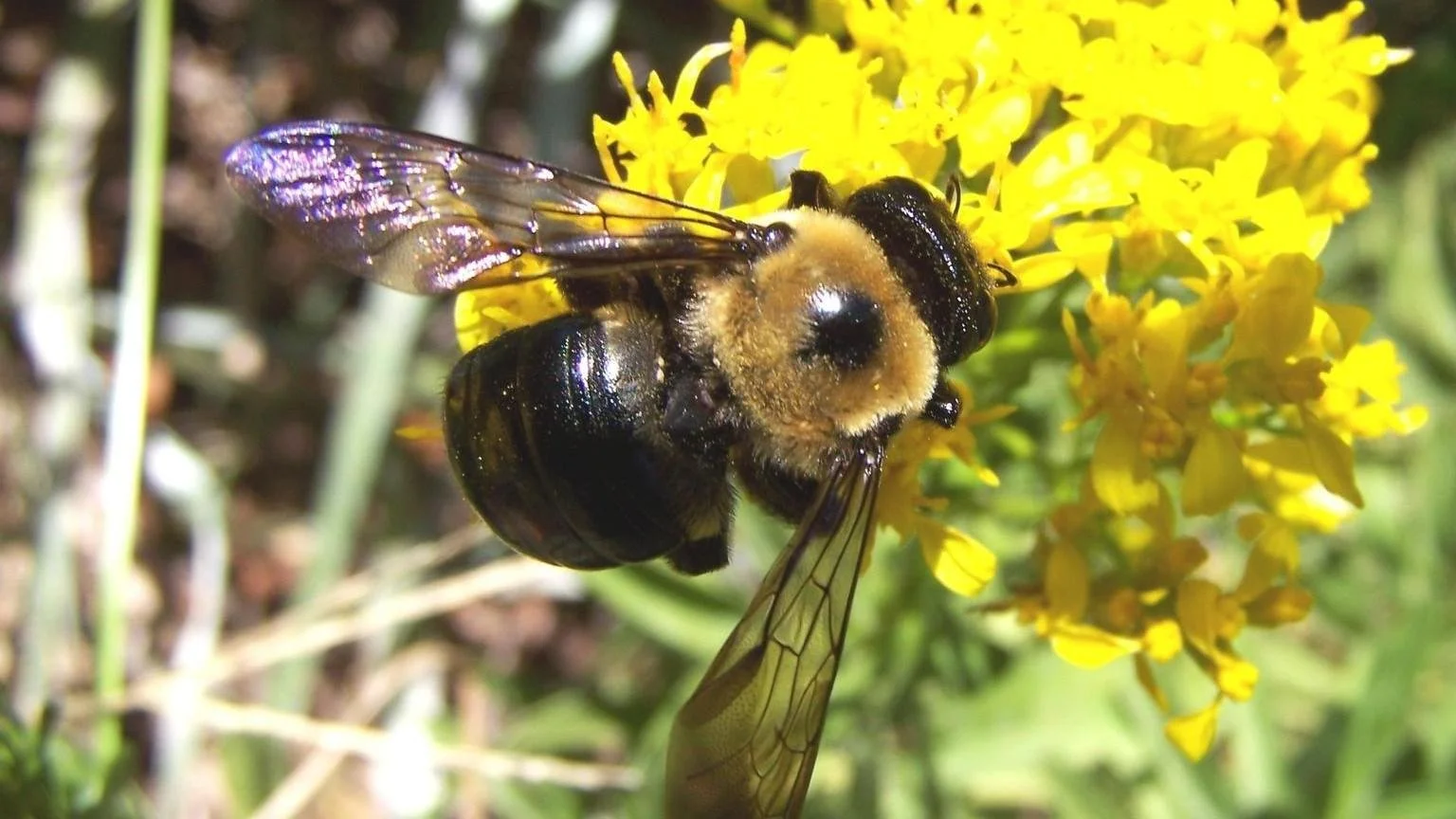Species Profile: Carpenter Bee
Common Name: Carpenter Bee
Scientific Name: Xylocopa spp. (notably Xylocopa virginica in Central Texas)
Location: Common in Central Texas, especially in urban gardens, wooded areas, and fields with exposed wood or dead trees. Frequently seen around decks, fence posts, and barns.
Mating Habits: Solitary bees. Males establish and guard small territories near potential nest sites. After mating, females bore holes into wood to lay eggs, creating galleries where larvae develop.
Seasonal Habits / Migratory Patterns: Not migratory. Adults emerge in spring, mate, and begin nest construction. One or two generations may occur per year depending on climate. Adults may overwinter in old nest tunnels.
Ecological Relevance: Important native pollinators, especially for large flowers. Though not as efficient as bumblebees for some crops, their long foraging season makes them valuable contributors to pollination networks.
Interesting Facts:
Often mistaken for bumblebees but have shiny, hairless abdomens.
Their “drilling” behavior can cause concern, but structural damage is usually minimal.
Males cannot sting, though they may act aggressively.
Native Plant Associations: Visit a variety of wildflowers, including penstemon, salvia, passionflower, and thistle. Prefer open-faced, nectar-rich blooms.
Conservation Note: Leave dead wood in natural areas or install bee blocks to support nesting. Avoid broad-spectrum insecticides that harm pollinators.

